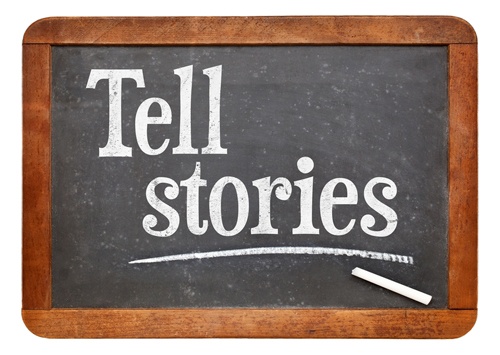by Ryan H. Flax
(Former) Managing Director, Litigation Consulting and General Counsel
A2L Consulting
This may seem trite to a lot of lawyers, but storytelling is essential to winning trials – and that goes for mediations, arbitrations, and hearings, literally anywhere you must connect with an audience. That audience can be a jury, a judge or a mediator. Most lawyers leave law school with an understanding that to win a case, we need to identify the intersection of law and facts. We are never taught, however, about this very important final issue – the fact that we are always dealing with human beings and that the need to persuade people is paramount.
Whether it’s your story or not, a story will inevitably emerge during a trial. Mock trials and focus groups have repeatedly shown that when a jury has two camps representing the two sides of the case, each camp will have a fairly consistent story that it endorses and clings to. Consistently, we find that those stories are short, that they fit with “common sense,” that they borrow some of the salient facts from the trial, and that they are complete tales, with a beginning, a middle and an end – including what happened and what should have happened. They take only a few moments to tell, and they use plain language. Once embedded in a juror’s mind, these stories are difficult, if not impossible, to change.
Where do these stories come from? The answer is that people automatically make stories out of virtually everything they see, in order to gain a sense of control – even if it’s a false sense. Most people can’t resist making assumptions, drawing inferences, and imposing upon the facts their notions of what the facts “mean” rather than simply accepting information as is. Most of what people discuss with others is stories and gossip, not random facts.
Scientists at Princeton University looked at brain scans (fMRI) of storytellers and listeners to the stories. What they found was that the most active areas of the brains of the speakers and listeners matched up, i.e. they were in sync with each other. This synchronized activity was found in the areas of the brain that were relevant to social activity, not the areas that drive memory or the prefrontal cortex that is associated with cognitive processing. The stronger the reported connection between speakers and listeners, the more neural synchronicity was observed in the test subjects.
The extent of brain synchronicity predicted the success of the communication in this study. So connecting with your audience, in a literal sense, makes you more persuasive.
Other research using brain scans reveals other important information about effective storytelling and will help you understand better the art of persuasion. This research shows that our brains react differently based on the types of words that we hear. Information, or evidence, that was presented to the test subjects without using sensory language stimulates only the brain’s language areas (Broca’s and Wernicke’s areas), and is interpreted by jurors simply as noise. With this type of language, the task for the listener is to simply remember words and more words. That is not enjoyable and not interesting for the audience, which makes keeping them engaged and persuading them much more difficult.
By incorporating metaphors and sensory language, you engage your audience’s brain. By using sensory words such as “lavender” or “cinnamon,” or movement words like “running” or “swimming,” you activate the part of the listener’s brain that would be active were they actually having that experience. You can thus engage an audience – such as a judge, jury or mediator – by inducing their brains to operate more as a participant than as an observer.
What else do stories do for jurors? They interrupt daydreaming and help jurors organize information. They make the intake of information enjoyable. Jurors, and even judges, can get bored otherwise and can daydream during trial when they should remain engaged.
In our next post, we will look at the rules of thumb for developing an effective trial story. Click here to be notified of subsequent articles.
Other articles and resources related to trial preparation, storytelling for lawyers and persuasion from A2L Consulting:
- Winning BEFORE Trial - Part 2 - Parallel Trial Preparation Tactics
- Winning BEFORE Trial - Part 1 - Consider Litigation Costs and Opportunities
- Storytelling for Litigators E-Book 3rd Ed.
- Are You Smarter Than a Soap Opera Writer?
- 5 Ways to Maximize Persuasion During Opening Statements - Part 1
- Don't Be Just Another Timeline Trial Lawyer
- $300 Million of Litigation Consulting and Storytelling Validation
- Free Webinar: Storytelling as a Persuasion Tool
- Complimentary Subscription: This Blog! The Litigation Consulting Report
- Why The Use of Clichés Puts Your Persuasiveness at Risk
- How to Apply Cialdini's 6 Principles of Persuasion in the Courtroom
- Top 14 Litigation Consulting and Persuasion-Focused Articles of 2014
- How I Used Litigation Graphics as a Litigator and How You Could Too
- 14 Differences Between a Theme and a Story in Litigation
- Storytelling Proven to be Scientifically More Persuasive
- 10 Things Every Mock Jury Ever Has Said






Leave a Comment